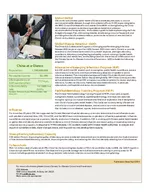PDF-HIVAIDS Factsheet Impact in China x Over million followers on a health promotion Chinese
Author : danika-pritchard | Published Date : 2014-11-29
x In 2012 FETP trainees participated in 118 outbreaks ranging from cholera to brucellosis x From 2011 2012 assessed tuberculosis among 900 village doctors an under
Presentation Embed Code
Download Presentation
Download Presentation The PPT/PDF document "HIVAIDS Factsheet Impact in China x Over..." is the property of its rightful owner. Permission is granted to download and print the materials on this website for personal, non-commercial use only, and to display it on your personal computer provided you do not modify the materials and that you retain all copyright notices contained in the materials. By downloading content from our website, you accept the terms of this agreement.
HIVAIDS Factsheet Impact in China x Over million followers on a health promotion Chinese: Transcript
Download Rules Of Document
"HIVAIDS Factsheet Impact in China x Over million followers on a health promotion Chinese"The content belongs to its owner. You may download and print it for personal use, without modification, and keep all copyright notices. By downloading, you agree to these terms.
Related Documents














